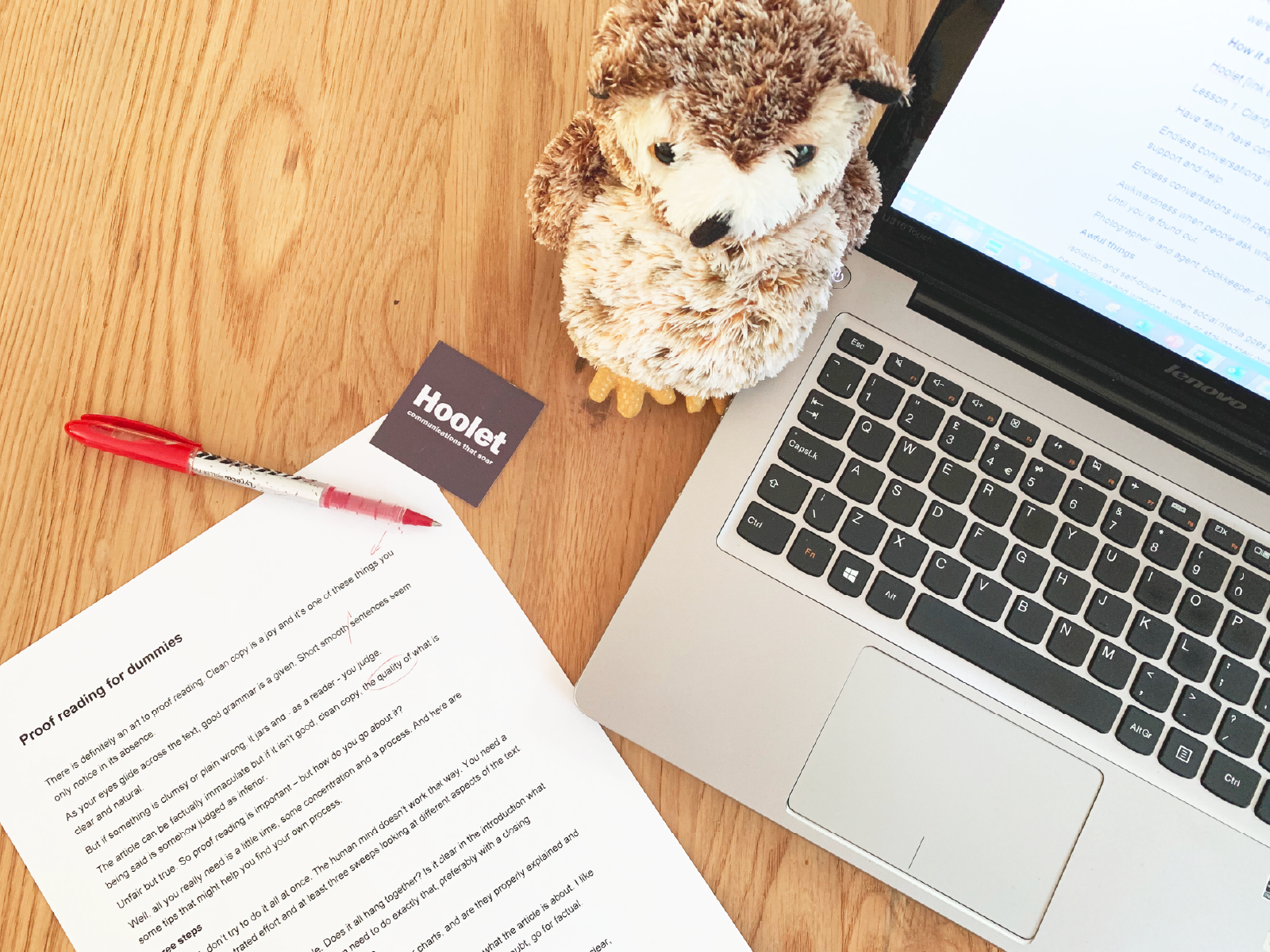There is definitely an art to proof reading. Clean copy is a joy and it’s one of these things you only notice in its absence.
As your eyes glide across the text, good grammar is a given. Short smooth sentences seem clear and natural.
But if something is clumsy or plain wrong, it jars and – as a reader – you judge.
The article can be factually immaculate but if it isn’t good, clean copy, the quality of what is being said is somehow judged as inferior.
Unfair but true. So proof reading is important – but how do you go about it?
Well, all you really need is a little time, some concentration and a process. And here are some tips that might help you find your own process.
Three steps
First of all, don’t try to do it all at once. The human mind doesn’t work that way. You need a block of concentrated effort and at least three sweeps looking at different aspects of the text.
1 – the holistic whole
First, read the piece as a whole. Does it all hang together? Is it clear in the introduction what you’re going to talk about? You then need to do exactly that, preferably with a closing summary that neatly wraps everything up.
Are there relevant and helpful images, graphs or charts, and are they properly explained and captioned?
You’ll need a good title or headline. Something that explains what the article is about. I like to try for something that intrigues but doesn’t disappoint but if in doubt, go for factual.
2 – the detail
Next, down to business. Read it for the facts and the sense. We’re aiming to be clear, consistent and engaging.
Maybe there is a better way of phrasing a sentence. Can you make something clearer without changing the sense of it? Take out technical language and explain acronyms. You are aiming for plain English and the avoidance of clichés (like the plague).
Is there duplication that can be taken out? Have you used the same word 14 times? Is there a sentence with 64 words in it? Be generous to the reader and turn it into three sentences.
3 – word by word
Then we’re on to the grammar, punctuation and style. A good tip here is to switch off the reading part of your brain.
You’re not thinking about the sense of it, you’re looking at the copy, word by individual word.
Have you been “mistyping”? Spellcheck will get you so far, but look out for those pesky little words like so, to, of, if, and, an and are.
Make sure all your verbs and tenses agree, your apostrophes are in the right place and numbers and dates in the same format. Sometimes it’s a matter of style but if you say 16th July, don’t say July 16 in the next paragraph.
Proof is in the reading
So now your copy should pretty much be there.
My top tip – although this may be because I’m set in my ways (a polite way of describing a dinosaur) – is to print it out.
There’s something about a piece of paper and a pen that seems to concentrate my mind, rather than endlessly scanning a screen.
And it’s always a good idea to get a different pair of eyes to read your piece of genius. There is some weird law that stops you from noticing the most blindingly obvious mistake even after the 56th reading.
Good luck with the good, clean copy.
Hoolet is a strategic communications consultancy. Come say hello on Twitter at @hoolet_hoots, or follow us on LinkedIn. You can read more blogs here.

